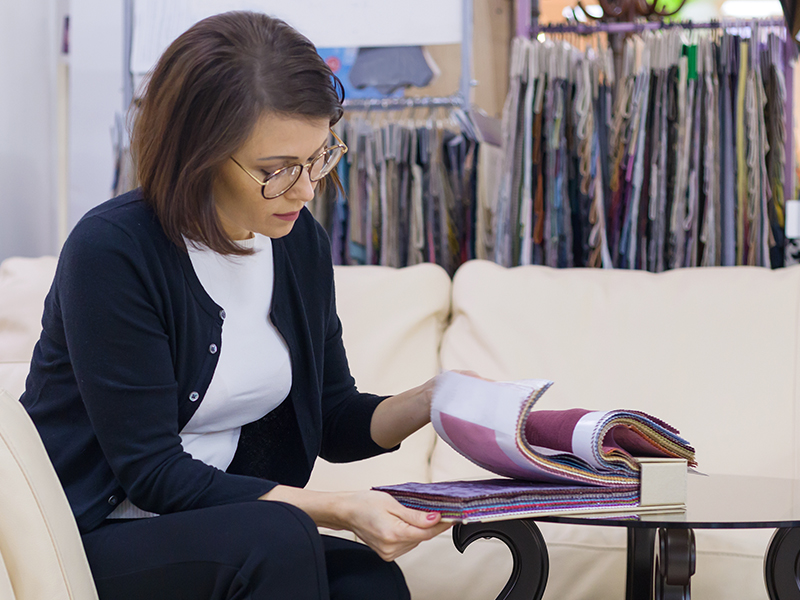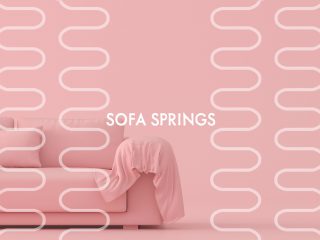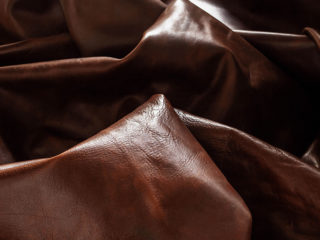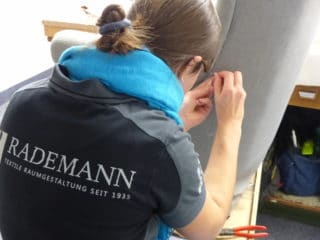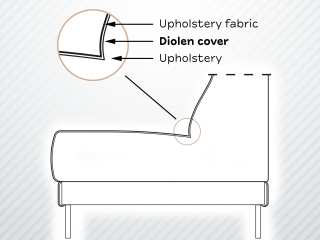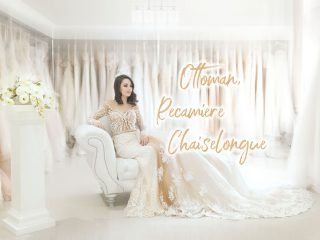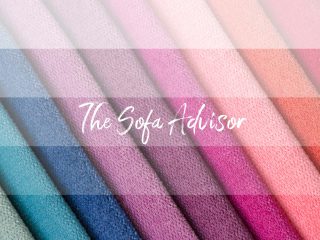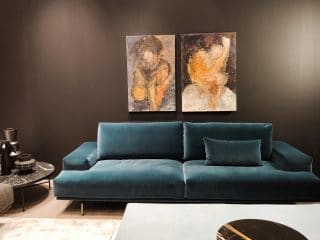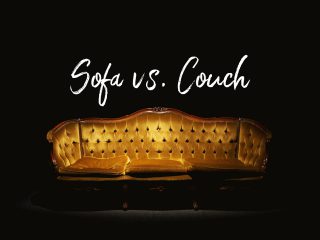Overview
Sofa fabric – quality criteria for upholstery fabrics
The qualities of a sofa fabric are the most important, along with its appearance. There are a number of measurable criteria that give many clues as to whether the upholstery fabric is the right one. If you follow them, it will be easier for you to make the right choice when buying a new sofa.
The following criteria must be observed:
Since we are in Germany, there are of course a number of standards through which objective test methods and minimum requirements for sofa fabrics can be defined. You should pay particular attention to the following criteria:
Sofa fabric abrasion resistance
Abrasion resistance, also called abrasion resistance, refers to the resistance of a sofa fabric to abrasion. This value plays a very important role in the durability of a fabric. This value can be determined using the Martindale test method. The fabric to be tested is rubbed with a specified load against a woolen standard fabric. In contrast to the test fabric, the standard fabric is changed regularly. The test is carried out until 2 threads are so worn that they tear or there is visible fiber loss. The number of abrasion cycles (revolutions) until the fabric is damaged is counted. The higher the number of revolutions, the more abrasion resistant the fabric is.
The following guide values are used:
- 10.000 abrasion
Fabric sufficient for private use, little use - 15,000 abrasion cycles
Fabric sufficient for private use, regular use - 20,000 abrasion cycles
Fabric sufficient for public use, regular use - 30,000 abrasion cycles
Fabric sufficient for public use, intensive use - 40,000 abrasion cycles
Fabric sufficient for public use, very intensive use
The German Furniture Quality Association (DGM) requires at least 10,000 abrasion cycles for the award of its quality seal.
Note: How abrasion resistant an upholstery fabric needs to be depends on what type of upholstery your sofa has. If the upholstery is more firm, the fabric will also be stretched tightly over the sofa, putting it under more scrubbing stress. If the upholstery is more soft, where the fabric is loose over the upholstery, it will be able to respond better to the stress because it has some room to move.
Pilling for upholstery fabrics
Small fiber nodules on the top of a sofa fabric are called pilling or pill formation. This pilling is caused by normal use of the upholstered furniture. Tiny pieces of fiber detach from the surface and tangle together. Martindale testing (a method of determining abrasion resistance) can also test for pilling of a fabric. Two samples of the fabric are required. One is taken out of the machine after 2000 friction cycles, the other after 6000 friction cycles. The reason is simple: some fabrics tend to pill more when new, others only after prolonged use. Both fabrics are entered and the worse result as the overall score.
- 1 = very strong pilling
- 2 = strong pilling
- 3 = average pilling
- 4 = light pilling
- 5 = no pilling
Note: Light pilling occurs quite often and need not cause you concern, A lint razor or lint shaver will remove pills effortlessly.
Light fastness of sofa fabrics
Any sofa fabric will eventually fade when exposed to light (especially sunlight). Lighter and brighter colors are more susceptible than darker ones. Synthetic fibers are superior to natural fibers in this respect, as they are usually more lightfast. A special test procedure (DIN 53952) determines the lightfastness of sofa fabrics. Here, part of the test fabric is covered and another part is irradiated with artificial UV light for a longer period of time. The result is classified on a scale from 1 to 8:
- 1 = very low light fastness
- 2 = low light fastness
- 3 = moderate light fastness
- 4 = fairly good light fastness
- 5 = good light fastness
- 6 = very good light fastness
- 7 = excellent light fastness
- 8 = excellent light fastness
Please note: Even sofa fabrics with the best rating 8 (excellent lightfastness) are unfortunately not permanently and one hundred percent lightfast. To avoid fading, it is best not to expose your upholstered furniture to direct sunlight for long periods of time.
Abrasion resistance of a sofa fabric
This test checks whether the color of the upholstery fabric can transfer to other textiles. The sofa fabric is tested in both dry and wet condition. Light and brilliant colors usually achieve better results here than dark shades.
- 1 = very low abrasion resistance
- 2 = moderate abrasion resistance
- 3 = fairly good abrasion resistance
- 4 = good abrasion resistance
- 5 = very good abrasion resistance

The jeans – the enemy of the sofa: many modern jeans are not colorfast in the first time due to their manufacturing processes. Particular caution is required here, especially with light-colored sofa fabrics. The abrasion resistance of the sofa fabric has nothing to do with the discoloration of the jeans. Here, only the jeans (or another staining garment) is responsible.
Conclusion: should you now choose only the very best sofa fabric?
It’s like so often: If you save on quality, you often save in the wrong place. It’s the same with sofa fabrics. Your new sofa should accompany you as long as possible and still look good after years. You should choose the right sofa fabric for your purpose and use. It doesn’t have to have top marks in all areas.
You should ask yourself the following questions when choosing a sofa fabric:
Do you or your children use the sofa every day?
A particularly durable sofa fabric is appropriate here. The best choice is a poly fabric, a flock velour or a microfiber fabric with a high synthetic fiber content.
Do you have particularly bright rooms or direct sunlight?
A high lightfastness is then of particular importance for you.
Do you only occasionally spend time on the sofa?
A sofa fabric with low abrasion resistance, for example a flat weave with a high natural fiber content, is the right choice here.
Of course, the choice of cover quality also depends on whether you are buying upholstered furniture for many years or if you like to refurnish from time to time.
